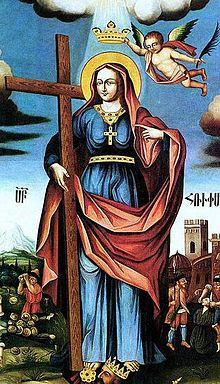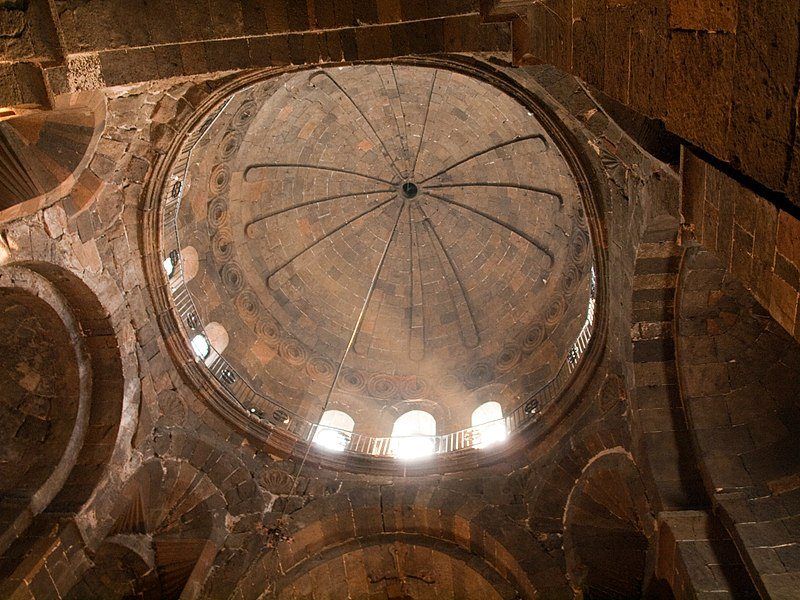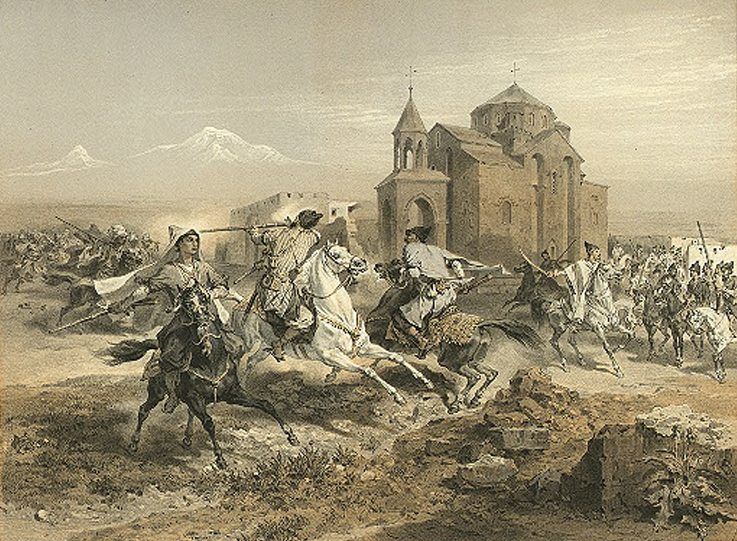Saint Hripsime Church is one of the oldest churches in Armenia. It’s located in Vagharshapat (Ejmiatsin). Near to Saint Hripsime Church, there is the mother church of Armenians, St. Ejmiatsin.
The church was listed in a UNESCO World Heritage Site. St Hripsime Church is an example of Armenian middle-aged constructions, but it has more improved style. It is one of the Armenian architectural masterpieces. The Church belongs to the crucial churches that have central domes. It grabs attention with simplicity and majesty of its architectural styles. Under the graveyard of the church, there is St Hripsime’s grave.
The History of St Hripsime’s church
Komitas Aghtsetsi was the founder of St Hripsime Church. He established in 618. We learn about the date of the establishment from two signatures: one inside the building, over the Eastern apse, the other, outside, over the Western entrance to the cathedral, confirmed by Catholicos Komitas and also by Sebeos, who was a 7th-century historian.
St Hripsime
St Hripsime Church is memorable not only with its architecture, design and the age but also with its story. In the base of the story are St Hripsime and her companions.
According to M. Ormanyan, under St Gayane and St Hripsime Churches, there are big groundings where maidens’ bones are buried.
The number of maidens who came to Armenia was 70, according to Agathangeghos, and 37 of them was martyred. Only Hripsime, Gayane and Mariane names have reached to us. Grigor I Lusavorich classified St Hripsime and her companions as saints. Hripsime and Gayane names we see not only in Armenian, but also, in Greek, Latin, Arabic, Russian and Coptic Haysmavurqs ( a ritual book which contains stories about sacred people). Eusebius of Caesaria, a Greek historian of Christianity was the author of those books.
St Hripsime and St Gayane with their companions are the same maidens group, but in Armenian Apostolic Church’s Calendar, there are two festivals for their remembrance because they were martyred during two days, in separate groups.
The Story about St Hripsime and her companions
Here is what we can learn from the historical information. The Roman emperor Diocletian wanted to marry one more time and he sent his people to check every part of his empire and bring to him the most beautiful girl. Trackers show some beautiful nuns pictures. The emperor mostly liked Hripsime, who was living in St Poghos Monastery with, around, 300 nuns. The abbess of the monastery was Gayane, Hripsime’s preceptor. Diocletian Emperor seeing the picture of beauteous Hripsime wanted to marry her.
Knowing the desire of the emperor, Gayane, Hripsime and around 70 nuns and scholars left the St Poghos Monastery at night and go to Egypt, Alexandria. Later they go to Jerusalem, and pray for one month at the grave of Mother of Jesus, asking help from her. Mary appeared to them and ordered to go to Armenia. In Vagharshapat, nuns stayed at Wine Presses. Before the Wine presses were from town’s gate till today’s St Hripsime’s Church. The main gate “Areg” is on the crossroad of Mashtots Avenue and Spandaryan street.
From bibliographical information, we learn, that after adopting Christianity, Grigor Lusavorich chose those Wine presses for the living, where nuns lived, and right there he saw the apparition. There is a big possibility that the church of 4-5 centuries is the place where nuns lived.
Diocletian Emperor sent people to everywhere so that they found Hripsime and took her to him. Knowing that nuns had gone to Armenia he sent heralds. They give a letter to Armenian king Tiridates III from Diocletian. In the letter the emperor asked the king to find Hripsime and sent her back, or, if Tiridates liked the nun he could marry her. The heralds of the king found Hripsime in Wine presses…
How Tiridates III Killed Hripsime
At first, Tiridates III sent golden sofas and servants to take Hripsime to the palace. But they met Hripsime’s and other nuns’ resistance. With a great difficulty, they could take Hripsime to the palace and kept in one of the rooms. The beauty of Hripsime attracted the Armenian king, and he wanted to marry her. He tried everything to convince Hripsime to marry him, but she denied.
After that he treated him violently, trying to possess Hripsime. She, surprisingly, could defeat the king, and he called Gayane to persuade her to obey the king. Gayane encouraged Hripsime to do everything so that she woudn’t marry Tiridates III, as changing the heavenly happiness with the worldly temporary pleasure would be a big sin. For that speech, they broke Gayane’s mouth with stones and close her in a jail with her friends. Hripsime continued protecting herself and for the last time she pushed Tiridates and could ran away of him and reach to their Wine presses.
Tiridates III got angry and sent his executioners after Hripsime. They found her in one place praying. And here, after lots of cruel torturing died the beautiful maiden. The executioners killed the 32 nuns with glaives, who wanted to bury Hripsime. Later they killed Mariane who couldn’t join her friends to help them because of the illness.
What Happened to Their Bodies
After killing them, Tiridaes III ordered not to bury their bodies. No predacious animal went near to their bodies. Grigor Lusavorichcame out of the ditch after nine days and buried them in the places where they died.
Hripsime died in the place where they established St Hripsime Church.
The Architecture of St Hripsime Church
Over the centuries no one changed St Hripsime’s construction. In 1651-1653 Catholicos Pilippos help to renovate the church. According to the 17th-century Armenian historian Arakel of Tabriz, repairs were made on the entire roof, the top of the dome, the facing of the walls and their bases. On the top of the roof, there is a cross, and a small portico was attached to the church on the west side. In 1790, on the west side, they built a bell tower.
Hrip’sime is a highly complex type of central-plan church which has been considered specifically Armenian.
There are 12 windows. Above the cupola, there are 12 panels. Deep triangular niches, on the exterior, emphasize a vertical division of the church.











Leave a Comment